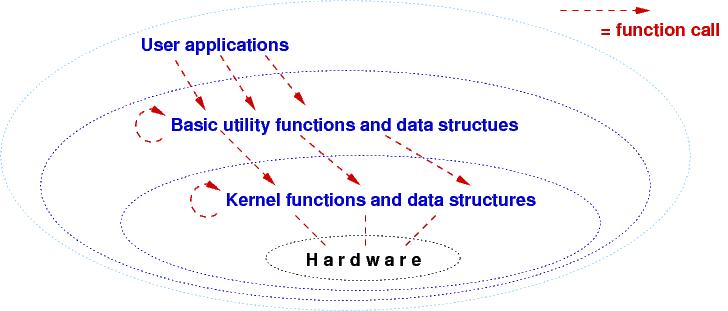Each tier of functions use data structures only at their own level and call functions at the same level or only one level lower.
We will learn to design and implement component-based programs, where the components are designed and coded in an object-oriented language.
When programs got large (e.g., computer operating systems in the 1960s), they became
a mess. (Large programs are built by teams, and it is impossible for multiple
people to share and alter one single large program, let alone understand the entire thing!) In the 1970s, the Multics operating system was designed to have
levels/"tiers" of functions and data structures:
Each tier of functions use data structures only at their own level and
call functions at the same level or only one level lower.

The functions that talk to the computer hardware live at the lowest, kernel, level, and assembly-level functions (open file, read word, allocate storage) and their data structures are grouped together at the "utilities level". Then, "applications" (user programs) are grouped at the next level.
The Multics software architecture was a huge success because the operating system was written, tested, and understood in layers. It could also be ported to other computer hardware, merely by recoding the functions in the kernel.
All modern operating systems, as well as networking software, are now built in this layered architectural style.
This can be bad, because a C program lets all functions share all data structures. This doesn't work well for large data-base programs, large games, large ANYTHING.
Object-oriented languages let you build programs in pieces (components, assemblies), like cars, electronic gadgets, and buildings are built.
Further, just like cars have blueprints, electronics have schematics, and buildings have floor plans, so do object-based software systems. A system's blueprint defines its software architecture. We will learn several forms of software blueprints in this course; the format for the blueprints is called the Unified Modeling Language (UML).
What forms of architecture does Visual Studio "lead you to"? It's time for a lab exercise.